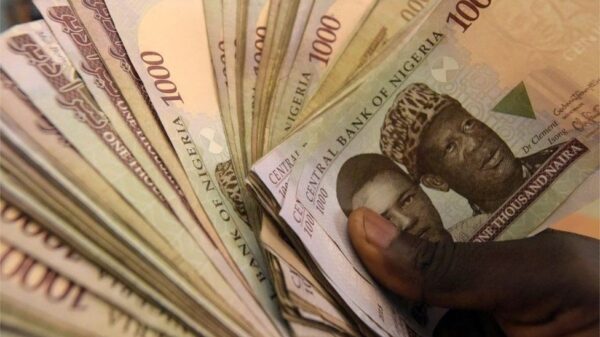The South African economy recovered lost ground in the third quarter boosted by productive sectors, but the latest figures hide an ugly reality: difficult times lie ahead.
For starters, while chief economists Isaah Mhlanga and Chifipa Mhango both welcomed the third-quarter growth of 13.5%, they point out it came from a low base. That is important because of the drastic second-quarter contraction of 51.7%.
Mhlanga, the chief economist at financial services company Alexander Forbes, tells The Africa Report that in rand terms the South African economy went up R353bn ($23.5bn) in the third quarter, compared to the R512bn contraction documented in the second quarter.
This means “we recovered just over half of what was lost in the second quarter,” according to Mhlanga.
The annualised rate of 66.1% is better than the consensus expectation of 54.4%.
Looked at historically, the dismal second-quarter performance meant South Africa’s GDP dropped to levels last recorded in the second quarter of 2007. The third-quarter outcome is in line with where GDP was in the second quarter of 2018. “We have some way to go before we recover all the lost GDP,” says Mhlanga.
Statistics South Africa (Stats SA), the government statistics agency, released the country’s third-quarter GDP figures on 8 December. The annualised rate was 66.1%, but the quarter-on-quarter measure showed a 13.5% improvement in economic growth.
The annualised rate of 66.1% is better than the consensus expectation of 54.4%. Mhlanga explains: “We need to note …. [the numbers] are recovering from a very low base and the numbers are annualised. Nonetheless, the production side performed well.
He continues: “But we did not see the same level of performance in the service sector. Largely because it’s impacted by social-distancing measures – as we now see in Nelson Mandela Bay – that impacted GDP much more compared to the production sector.”
Sector contributions
Improvements in, among others, manufacturing, mining, exports and construction helped lift the third-quarter GDP performance:
- Manufacturing was boosted by “basic iron and steel, non-ferrous metal, and metal products and machinery; petroleum, chemical products, rubber and plastic products; transport equipment; and food and beverages,” wrote Stats SA.
- Mining benefited “largely on account of the easing of local and global lockdown restrictions,” explained the statistical agency. This saw the sector increase production in platinum group metals, iron ore, gold, manganese ore and diamonds.
- Precious metals and stones; machinery and equipment; mineral products; and base metals contributed to the increase in exports, while construction was helped by “residential buildings, non-residential buildings and construction works,” according to Stats SA.
Truth of the matter
Alexander Forbes’ economist Mhlanga points out: “All in all, it is good numbers. But it’s not yet time to celebrate, to say we are now on our way to recovery. We are still far from where we were at the beginning of the year – about 5% lower.”
South African exports also benefited from an improvement in economic activity in China. The Chinese have ramped up infrastructure investment, which requires commodities. That has helped in terms of demand and price recovery. These are factors that have enabled mining companies to increase production in South Africa.
“That, in part, explains the recovery in the mining sector. We do partially manufacture some of the metals, which means mining has a positive impact on manufacturing,” says the Alexander Forbes chief economist.
Chifipa Mhango, the chief economist at Steel and Engineering Industries Federation of Southern Africa, says: “From a metals and engineering (M&E) sector perspective, we are encouraged to see the rise in construction activity in the third quarter. The construction industry is one of the key market segments for M&E industry products and accounts for over 60% of the local steel industry’s sales volumes,” adds Mhango.
However, “local demand remains weak, [and] export markets offer opportunities for the M&E industry,” according to Mhango. Crucially, “the M&E sector is heavily reliant on the performance of the mining, construction, and other manufacturing sector segments to survive,” Mhango explains.
Alexander Forbes’ Mhlanga offers a similar assessment about construction. “As far as the domestic construction sector is concerned, it’s coming along from a low base,” notes Mhlanga, “it has been in recession for longer than all the other sectors. Coming from a low base, any slight improvement with the project pipeline that has been there for the last two years will show up as a significant rebound.”
More labour market pains anticipated
Job losses are another South African reality. Mhlanga warns that the country should brace for more of the same going into 2021.
A significant number of businesses have launched liquidation processes, most of which were delayed because of the hard lockdown. Since the hard lockdown has ended, most of those companies are concluding liquidations.
Added to that, Mhlanga predicts most companies will be reluctant to increase staff headcounts. Instead, companies are more likely to search for more efficiencies either through retrenchments or by adopting more digital processes to minimise the need for labour.
“Employment generation is going to be quite slow. We should continue to expect an unemployment rate that rises to anywhere between 35%-40% over the next two years before we can see an improvement,” Mhlanga says.


















































You must be logged in to post a comment Login